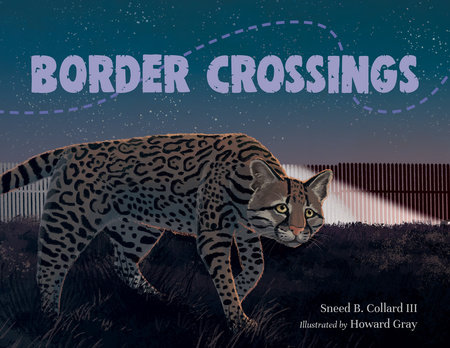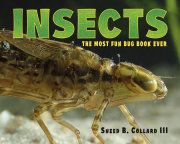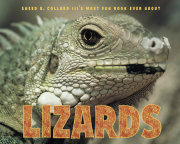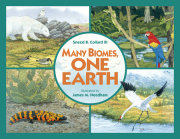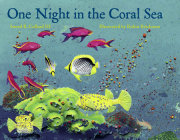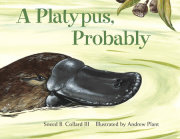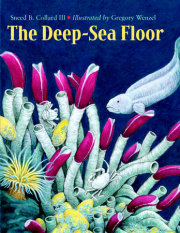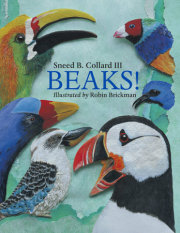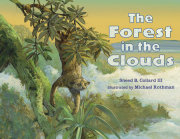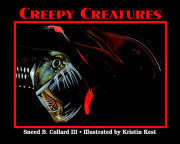


Follow two endangered ocelots as they attempt to cross the border in this powerful picture book about the environmental impact of the Wall.
Explore the beauty and biodiversity of our spectacular border area and see how the Wall impacts plants and animals. As two endangered ocelots attempt to cross the border, they face obstacles that drive home the catastrophic effects of the Wall--and the many benefits of keeping the border barrier-free. Powerful storytelling introduces young readers to the wildlife that thrives along the border and urges budding nature buffs to value and protect our environment.
2024 NCTE Orbis Pictus Award® for Outstanding Nonfiction for Children
Explore the beauty and biodiversity of our spectacular border area and see how the Wall impacts plants and animals. As two endangered ocelots attempt to cross the border, they face obstacles that drive home the catastrophic effects of the Wall--and the many benefits of keeping the border barrier-free. Powerful storytelling introduces young readers to the wildlife that thrives along the border and urges budding nature buffs to value and protect our environment.
2024 NCTE Orbis Pictus Award® for Outstanding Nonfiction for Children
-
WINNER
| 2024
NCTE Orbis Pictus Award for Outstanding Nonfiction for Children -
NOMINEE
| 2024
Keystone to Reading Book Award -
SELECTION
| 2024
CBC Awards & Honors -
RECOMMENDED
| 2024
Green Earth Book Award -
AWARD
| 2024
High Plains Book Awards
A passionate screed about the detrimental effects of the U.S. southern border walls on ecosystems, particularly wild animals.
A beautiful ocelot, one of only about 50 in the wild in the United States, prowls south in the springtime, seeking a mate. But the quietly moving cat encounters “something unexpected. Something frightening.” The obstacle is a 2,000-mile series of slats making up the border wall that separates the United States from Mexico in an effort to slow undocumented immigration. The ocelot is next scared off by a vehicle. “He will not find a mate or territory this year. Maybe not any year,” readers learn. The book then switches perspective to another ocelot on the opposite side of the wall before widening its view to discuss how entire areas of nature, even birds, are harmed by the human-made structures. Illustrations by Gray contrast the hard, unyielding structure, in one instance decorated by humans with counterdeclarations of love and peace, with the graceful curves of nature. Even the cacti look inviting. While the book’s conclusion is bleak, an author’s note explains with more context the extent of the problem and what nature lovers can do to help advocate for changes to the highly politicized border walls that would better accommodate animals and fauna. (This book was reviewed digitally.)
A convincing argument against border walls that even offers practical solutions. (glossary, further reading)
—Kirkus Reviews
On a warm, starry night, the pathways of migrating animals are blocked by the “ugly scar” of a border wall. Creatures seeking mates and food and grounds to roam find themselves blocked, imperiling “some of the richest habitats of North America.” Lush, nature-attentive illustrations flesh out this somber reality, depicting Sonoran desert stretches in shadow and sun, ocelots and other fauna with glowing eyes, and tempting spaces just beyond the creatures’ reach, alerting young readers to the ranging consequences of choosing to block borders off.
—Foreword Reviews
On a shadowy night, a young ocelot makes his way south in search of a mate, but his trip abruptly ends when he comes to a giant wall: “where protective plants once stood, an ugly scar now stretches.” Unable to squeeze through the wall’s slats or gain traction on its slippery sides, the ocelot turns back and becomes one of many animals whose environment has been radically changed by the border wall between the U.S. and Mexico. The book then walks viewers through the deserts, forests, and grasslands that surround the wall, emphasizing that the border is completely arbitrary and nonexistent in the environment. Its effects, however, are quite real, dividing breeding grounds, disrupting migratory patterns, and upending ecosystems. Simple, direct text gives the book broad accessibility, and an author’s note offers more specifics on the building of the border wall and the animals endangered both by its presence and other manmade threats. Suggestions for activism, a glossary, and further resources are included.
— The Bulletin of the Center for Children's Books
A beautiful ocelot, one of only about 50 in the wild in the United States, prowls south in the springtime, seeking a mate. But the quietly moving cat encounters “something unexpected. Something frightening.” The obstacle is a 2,000-mile series of slats making up the border wall that separates the United States from Mexico in an effort to slow undocumented immigration. The ocelot is next scared off by a vehicle. “He will not find a mate or territory this year. Maybe not any year,” readers learn. The book then switches perspective to another ocelot on the opposite side of the wall before widening its view to discuss how entire areas of nature, even birds, are harmed by the human-made structures. Illustrations by Gray contrast the hard, unyielding structure, in one instance decorated by humans with counterdeclarations of love and peace, with the graceful curves of nature. Even the cacti look inviting. While the book’s conclusion is bleak, an author’s note explains with more context the extent of the problem and what nature lovers can do to help advocate for changes to the highly politicized border walls that would better accommodate animals and fauna. (This book was reviewed digitally.)
A convincing argument against border walls that even offers practical solutions. (glossary, further reading)
—Kirkus Reviews
On a warm, starry night, the pathways of migrating animals are blocked by the “ugly scar” of a border wall. Creatures seeking mates and food and grounds to roam find themselves blocked, imperiling “some of the richest habitats of North America.” Lush, nature-attentive illustrations flesh out this somber reality, depicting Sonoran desert stretches in shadow and sun, ocelots and other fauna with glowing eyes, and tempting spaces just beyond the creatures’ reach, alerting young readers to the ranging consequences of choosing to block borders off.
—Foreword Reviews
On a shadowy night, a young ocelot makes his way south in search of a mate, but his trip abruptly ends when he comes to a giant wall: “where protective plants once stood, an ugly scar now stretches.” Unable to squeeze through the wall’s slats or gain traction on its slippery sides, the ocelot turns back and becomes one of many animals whose environment has been radically changed by the border wall between the U.S. and Mexico. The book then walks viewers through the deserts, forests, and grasslands that surround the wall, emphasizing that the border is completely arbitrary and nonexistent in the environment. Its effects, however, are quite real, dividing breeding grounds, disrupting migratory patterns, and upending ecosystems. Simple, direct text gives the book broad accessibility, and an author’s note offers more specifics on the building of the border wall and the animals endangered both by its presence and other manmade threats. Suggestions for activism, a glossary, and further resources are included.
— The Bulletin of the Center for Children's Books
Photos



About
Follow two endangered ocelots as they attempt to cross the border in this powerful picture book about the environmental impact of the Wall.
Explore the beauty and biodiversity of our spectacular border area and see how the Wall impacts plants and animals. As two endangered ocelots attempt to cross the border, they face obstacles that drive home the catastrophic effects of the Wall--and the many benefits of keeping the border barrier-free. Powerful storytelling introduces young readers to the wildlife that thrives along the border and urges budding nature buffs to value and protect our environment.
2024 NCTE Orbis Pictus Award® for Outstanding Nonfiction for Children
Explore the beauty and biodiversity of our spectacular border area and see how the Wall impacts plants and animals. As two endangered ocelots attempt to cross the border, they face obstacles that drive home the catastrophic effects of the Wall--and the many benefits of keeping the border barrier-free. Powerful storytelling introduces young readers to the wildlife that thrives along the border and urges budding nature buffs to value and protect our environment.
2024 NCTE Orbis Pictus Award® for Outstanding Nonfiction for Children
Awards
-
WINNER
| 2024
NCTE Orbis Pictus Award for Outstanding Nonfiction for Children -
NOMINEE
| 2024
Keystone to Reading Book Award -
SELECTION
| 2024
CBC Awards & Honors -
RECOMMENDED
| 2024
Green Earth Book Award -
AWARD
| 2024
High Plains Book Awards
Praise
A passionate screed about the detrimental effects of the U.S. southern border walls on ecosystems, particularly wild animals.
A beautiful ocelot, one of only about 50 in the wild in the United States, prowls south in the springtime, seeking a mate. But the quietly moving cat encounters “something unexpected. Something frightening.” The obstacle is a 2,000-mile series of slats making up the border wall that separates the United States from Mexico in an effort to slow undocumented immigration. The ocelot is next scared off by a vehicle. “He will not find a mate or territory this year. Maybe not any year,” readers learn. The book then switches perspective to another ocelot on the opposite side of the wall before widening its view to discuss how entire areas of nature, even birds, are harmed by the human-made structures. Illustrations by Gray contrast the hard, unyielding structure, in one instance decorated by humans with counterdeclarations of love and peace, with the graceful curves of nature. Even the cacti look inviting. While the book’s conclusion is bleak, an author’s note explains with more context the extent of the problem and what nature lovers can do to help advocate for changes to the highly politicized border walls that would better accommodate animals and fauna. (This book was reviewed digitally.)
A convincing argument against border walls that even offers practical solutions. (glossary, further reading)
—Kirkus Reviews
On a warm, starry night, the pathways of migrating animals are blocked by the “ugly scar” of a border wall. Creatures seeking mates and food and grounds to roam find themselves blocked, imperiling “some of the richest habitats of North America.” Lush, nature-attentive illustrations flesh out this somber reality, depicting Sonoran desert stretches in shadow and sun, ocelots and other fauna with glowing eyes, and tempting spaces just beyond the creatures’ reach, alerting young readers to the ranging consequences of choosing to block borders off.
—Foreword Reviews
On a shadowy night, a young ocelot makes his way south in search of a mate, but his trip abruptly ends when he comes to a giant wall: “where protective plants once stood, an ugly scar now stretches.” Unable to squeeze through the wall’s slats or gain traction on its slippery sides, the ocelot turns back and becomes one of many animals whose environment has been radically changed by the border wall between the U.S. and Mexico. The book then walks viewers through the deserts, forests, and grasslands that surround the wall, emphasizing that the border is completely arbitrary and nonexistent in the environment. Its effects, however, are quite real, dividing breeding grounds, disrupting migratory patterns, and upending ecosystems. Simple, direct text gives the book broad accessibility, and an author’s note offers more specifics on the building of the border wall and the animals endangered both by its presence and other manmade threats. Suggestions for activism, a glossary, and further resources are included.
— The Bulletin of the Center for Children's Books
A beautiful ocelot, one of only about 50 in the wild in the United States, prowls south in the springtime, seeking a mate. But the quietly moving cat encounters “something unexpected. Something frightening.” The obstacle is a 2,000-mile series of slats making up the border wall that separates the United States from Mexico in an effort to slow undocumented immigration. The ocelot is next scared off by a vehicle. “He will not find a mate or territory this year. Maybe not any year,” readers learn. The book then switches perspective to another ocelot on the opposite side of the wall before widening its view to discuss how entire areas of nature, even birds, are harmed by the human-made structures. Illustrations by Gray contrast the hard, unyielding structure, in one instance decorated by humans with counterdeclarations of love and peace, with the graceful curves of nature. Even the cacti look inviting. While the book’s conclusion is bleak, an author’s note explains with more context the extent of the problem and what nature lovers can do to help advocate for changes to the highly politicized border walls that would better accommodate animals and fauna. (This book was reviewed digitally.)
A convincing argument against border walls that even offers practical solutions. (glossary, further reading)
—Kirkus Reviews
On a warm, starry night, the pathways of migrating animals are blocked by the “ugly scar” of a border wall. Creatures seeking mates and food and grounds to roam find themselves blocked, imperiling “some of the richest habitats of North America.” Lush, nature-attentive illustrations flesh out this somber reality, depicting Sonoran desert stretches in shadow and sun, ocelots and other fauna with glowing eyes, and tempting spaces just beyond the creatures’ reach, alerting young readers to the ranging consequences of choosing to block borders off.
—Foreword Reviews
On a shadowy night, a young ocelot makes his way south in search of a mate, but his trip abruptly ends when he comes to a giant wall: “where protective plants once stood, an ugly scar now stretches.” Unable to squeeze through the wall’s slats or gain traction on its slippery sides, the ocelot turns back and becomes one of many animals whose environment has been radically changed by the border wall between the U.S. and Mexico. The book then walks viewers through the deserts, forests, and grasslands that surround the wall, emphasizing that the border is completely arbitrary and nonexistent in the environment. Its effects, however, are quite real, dividing breeding grounds, disrupting migratory patterns, and upending ecosystems. Simple, direct text gives the book broad accessibility, and an author’s note offers more specifics on the building of the border wall and the animals endangered both by its presence and other manmade threats. Suggestions for activism, a glossary, and further resources are included.
— The Bulletin of the Center for Children's Books
Author
Back to Top
Notifications






